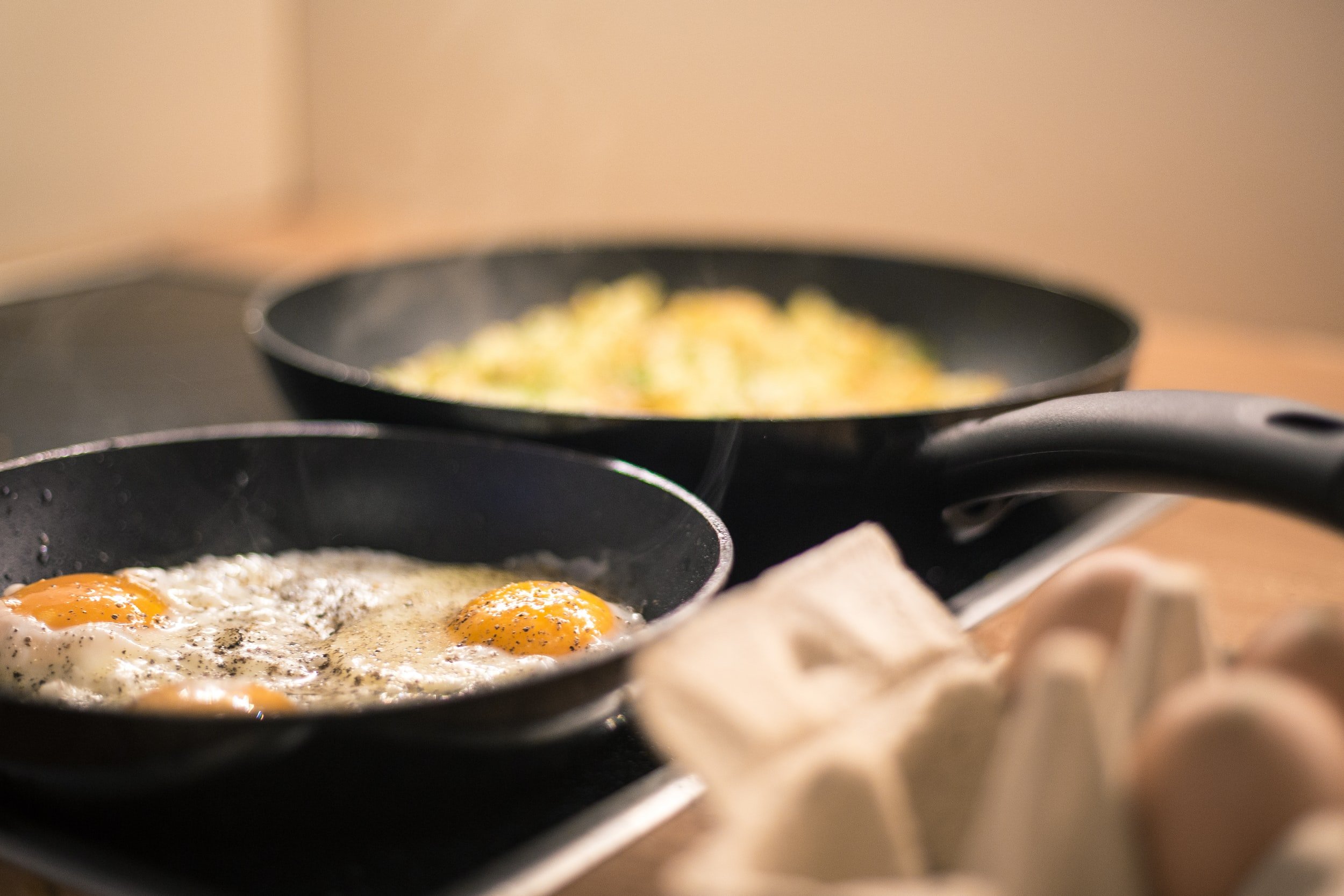The Science of Nonstick Pans
Have you ever how nonstick pans work or how they were invented? Here’s everything you need to know about how it works, how to use it, and how to care for these special pans.
History and Science Behind Nonstick Cookware
In 1938, research chemist Roy Plunkett was experimenting with alternatives to the Freon, a gas used in air conditioning. While experimenting, he created PTFE which stands for polytetrafluoroethylene. This solid is slippery and thus has low friction which causes cook to not stick. Plunkett trademarked PTFE as Teflon, and 20 years later it became the primary component of nonstick cookware.
The surfaces of a regular metal pan has high fricken due to the ragged surface. When heated, the metal expands and these pores enlarge, allowing food to seep in, solidify, and stick. To minimize that sticking tendency, you can coat a metal pan with oil, which fills the metal’s fissures so that food can’t enter Nonstick cookware companies coat the pans in PTFE which fills the pores of the pan, making its surface smooth.
Concerns with Nonstick Pans
Foods that use lower heat are better choices than foods tat need to be deeply chard. Heat energy moves through the pans causing electrons to be more active and move around. However, molecules in nonstick coatings hold electrons tightly, so these materials don’t conduct heat as efficiently. Although it’s possible to brown food in a nonstick pan, the level of browning isn’t as prominent as if you used a regular pan.
PTFE releases fumes into the air above 500°F. These fumes cause temporary flu-like symptoms in humans so it’s best to avoid heating nonstick pans above medium to medium-high heat on the stovetop. PTFE coating on nonstick pans also can flake off the pans. According to the Food and Drug Administration, particles of PTFE nonstick coating are inert and pose no health threat if ingested, but when a pan begins to lose its nonstick coating, it becomes less effective as nonstick cookware.
Caring for Nonstick Cookware
• Before the first use, gently hand wash the pan to remove any dust and debris.
• Refrain from using cooking sprays containing lecithin, which may leave a residue on the pan.
• Don’t heat the pan above medium to medium-high heat
• To prevent scratching, use plastic, rubber, silicone, or wooden utensils.
• Gently hand wash nonstick cookware instead of using the dishwasher.
• Hang pans side by side instead of stacking them, which can scratch the nonstick surface.
Jessica Burke Food Science Blog otium



